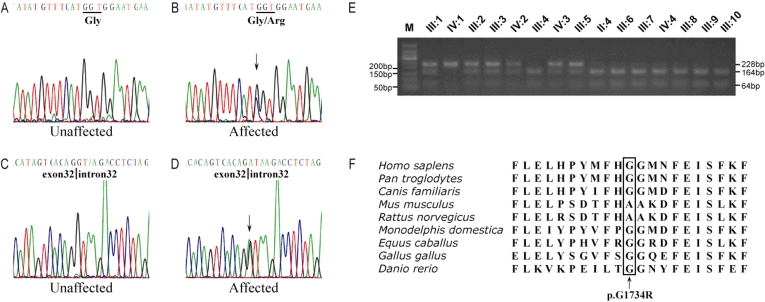Figure 4.
Identification of two novel USH2A mutations. DNA sequence analysis for patient III1 showed the presence of compound heterozygous p.G1734R (c.5200G>C) and c.IVS32+1A>T mutations. A and B show the sequences of a normal and affected family member with mutation p.G1734R (c.5200G>C) allele, respectively. C and D show the sequences of a normal and affected family member with mutation c.IVS32+1A>T allele, respectively. E: Restriction fragment length analysis on the p.G1734R (c.5200G>C) mutation in this study. All the affected individuals (III:1, III:3, III:5, IV:1, IV:2) and the carriers (III:2, IV:3) have three bands (228 bp, 164 bp, and 64 bp), while the unaffected individuals only have two bands (164 bp and 64 bp).The patient IV1 who is homozygous for the p.G1734R (c.5200G>C) mutation displayed only one 228 bp band. F: Alignment of the amino acid sequences of laminin G-like domain in the long usherin isoform from different species. Gly1734 (G1734) is conserved during evolution. The box indicates this mutated residue in USH2A.

